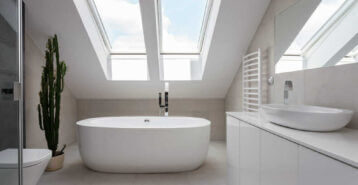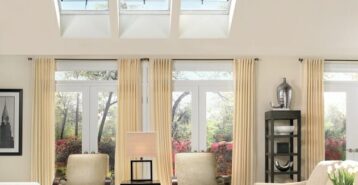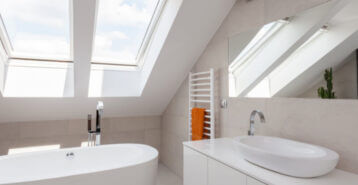Are you doing a bathroom remodel project?
Modernize can pair you with three to four pros in your area, so you can compare options and save time and money.
Energy-Efficient Bathroom Upgrades
Although your bathroom probably is not the biggest room in your house, it is often the room that consumes the greatest amount of energy.
While your bathroom may be one of the smallest rooms in your home, it often consumes a significant amount of energy. From daily grooming routines to long showers, bathroom activities involve high water usage, lighting demands, and plugged-in devices.
Homeowners can reduce their overall home energy usage by remodeling their bathroom’s outdated fixtures for modern, energy-efficient alternatives. In most cases, homeowners who replace older fixtures with ENRGY-STAR certified products are choosing high-performing, energy-efficient bathroom fixtures with the newest design technologies. Here are some sustainable upgrades you can consider to conserve energy in the bathroom.
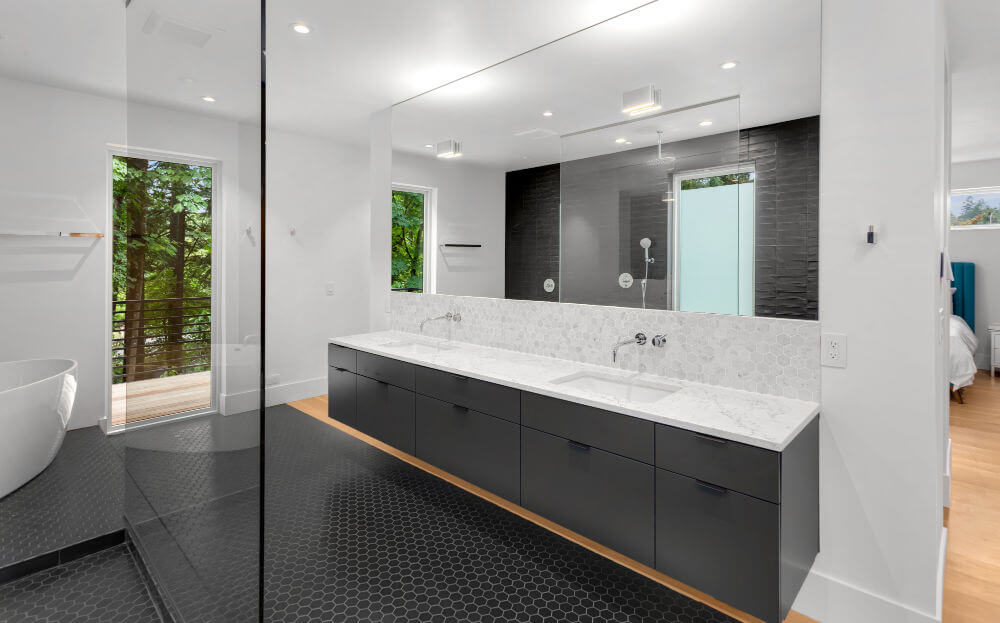
Why Energy-Efficient Bathroom Fixtures Matter
Your bathroom accounts for a considerable portion of your home’s energy and water usage. From lighting to water fixtures, older models often waste resources unnecessarily. Upgrading to energy-efficient fixtures not only minimizes environmental impact but also provides significant savings on energy and water bills over time.
For instance, replacing outdated fixtures with ENERGY STAR-certified products ensures high performance and advanced design technologies that can help reduce utility costs while improving comfort and convenience.
Energy-Efficient Bathroom Lighting
Modern bathrooms require bright, focused lighting for personal grooming and other tasks. Energy-efficient LED bulbs have revolutionized bathroom lighting, offering a combination of enhanced brightness, reduced energy consumption, and extended longevity.
- Benefits of LED Bulbs: These bulbs last 50,000 to 100,000 hours, up to 40 times longer than incandescent bulbs, and are up to 75% more energy-efficient.
- Customizable Lighting: Available in various color temperatures, such as “warm,” “daylight,” and “cool,” LEDs can create the ideal ambiance for your bathroom.
- Energy Savings: Installing ENERGY STAR-certified light fixtures further optimizes efficiency by distributing light effectively and reducing electricity use.
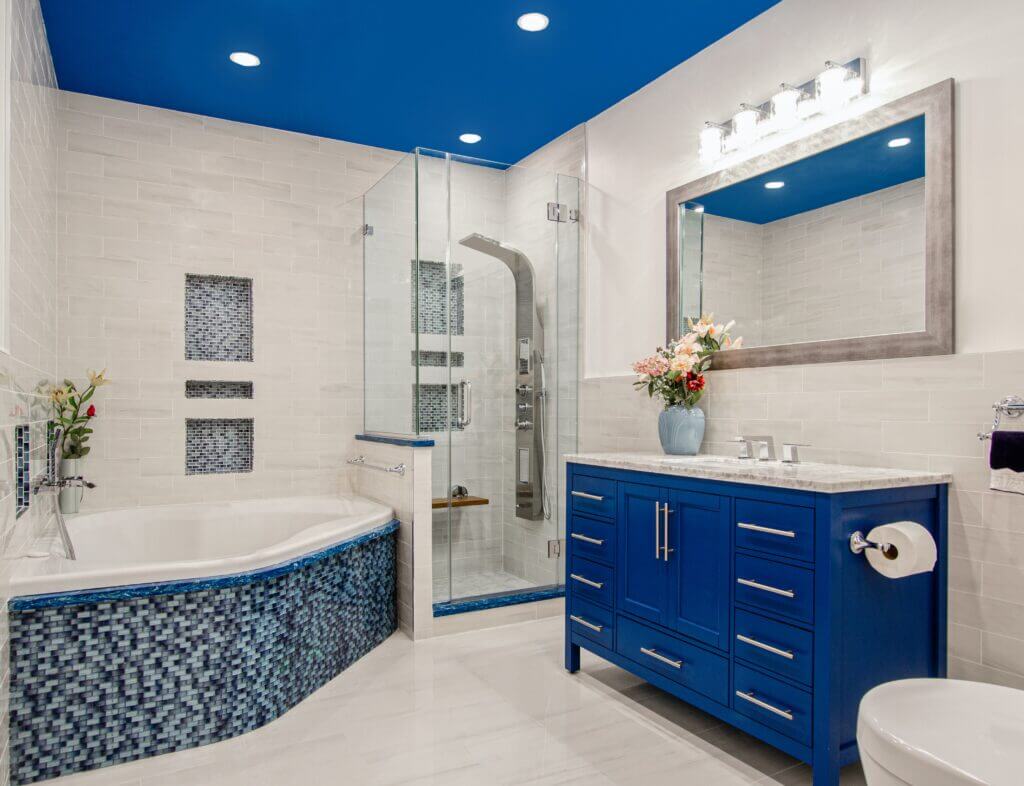
High-Efficiency Toilet
Many homeowners might not equate energy-efficiency with their toilets, but nearly one-quarter of all the water used in single-family homes comes from flushing the toilet, the Water Research Foundation reports.
High-efficiency toilets (HETs) are designed to significantly reduce this consumption by using water velocity rather than volume to remove waste.
Find the Right Contractor for Your Bathroom Remodeling Project
Whether you’re ready to begin your project now or need some expert advice, our network of contractors are here to help. With a few simple questions, we’ll find the best local professionals for you
- Water Savings: Standard toilets use 1.6 gallons per flush, while HETs use only 1.28 gallons, saving thousands of gallons annually.
- Cost Reduction: According to the EPA, upgrading to a water-efficient toilet can reduce water usage by 20-60% and lower monthly water bills.
- Additional Considerations: Families averaging five or more flushes daily can achieve substantial savings over time, making HETs a practical and eco-friendly choice.
American households average more than five flushes per day. According to the Environmental Protection Agency, a high-performance, water-efficient toilet can reduce annual toilet water usage by 20% to 60%. In addition to saving thousands of gallons of water each year, you also likely will realize significant reductions on your monthly water bill.
Energy-Efficient Bathroom Ventilation Fan
Exhaust fans in the bathroom are crucial for proper bathroom ventilation and moisture control. The best bathroom fans provide strong air movement measured in cubic feet per minute (CFM), low noise and reduced energy usage.
Bathroom ventilation fans are essential for controlling moisture and improving air quality. However, older models often consume excessive energy and emit high noise levels. Upgrading to an ENERGY STAR-certified fan can resolve these issues.
- Energy Savings: ENERGY STAR-certified fans consume up to 70% less energy than standard models while performing just as effectively.
- Low Noise Levels: Certified fans are rigorously tested to ensure minimal noise during operation, enhancing the bathroom experience.
- Proper Sizing: Ensure your fan’s cubic feet per minute (CFM) rating matches your bathroom size for optimal airflow.
Water-Saving Showerhead and Faucet
According to the U.S. Department of Energy, your shower is second only to the clothes washer for total hot water usage. A typical shower consumes 10 gallons of water — more if you enjoy standing under that steady stream of soothing hot water. Bathroom faucets, meanwhile, consume an average of 2 gallons per minute.
Showers and faucets contribute significantly to water and energy usage in the bathroom. Modern fixtures are designed to reduce water flow without compromising performance.
- Low-Flow Showerheads: Current models are limited to a maximum flow rate of 2.5 gallons per minute (gpm), with some eco-flow options using even less. These upgrades reduce water usage while maintaining a satisfying shower experience.
- Efficient Faucets: Bathroom faucets now feature aerators that restrict water flow to 1.5-2.2 gpm, significantly cutting water use.
- Hot Water Usage: Reducing water flow decreases the demand for hot water, leading to lower energy consumption and reduced utility bills.
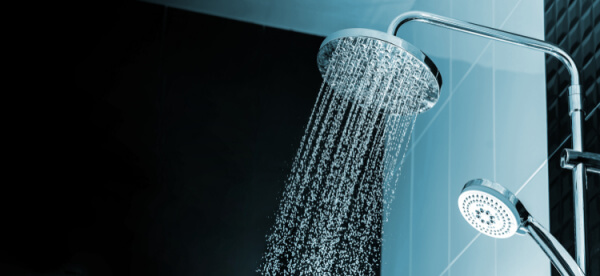
Simple Tips to Save More
In addition to upgrading fixtures, small changes in habits can lead to further savings:
- Shorten Showers: Reducing shower time by just a few minutes can save gallons of water.
- Turn Off Faucets: Use a faucet-on/faucet-off strategy when brushing teeth or washing hands.
- Unplug Appliances: Unplug curling irons, hair dryers, and other devices immediately after use.
- Add Motion Sensors: Install motion sensors for lighting to ensure lights are only on when needed.
Putting it all Together
Transforming your bathroom into an energy-efficient space requires both behavioral changes and strategic upgrades. While the upfront cost of energy-efficient fixtures may be higher, the long-term savings on energy and water bills will more than justify the investment.
By swapping outdated fixtures for high-efficiency models, you’ll not only save money but also contribute to a more sustainable future. Whether it’s upgrading to LED lighting, installing low-flow showerheads, or choosing an energy-efficient toilet, these changes will have a lasting impact on your bathroom’s efficiency and your household expenses.
Find the Right Contractor for Your Bathroom Remodeling Project
Whether you’re ready to begin your project now or need some expert advice, our network of contractors are here to help. With a few simple questions, we’ll find the best local professionals for you
Reviews from Real Homeowners
Welcome to Homeowner Resources! We are the Modernize blog. Modernize pairs more than 3 million homeowners a year with pre-vetted contractors in their area. This blog started because we believe homeowners should know everything about their homes, from how their HVAC works to which front door colors they might love. On Homeowner Resources, you can find information on every part of your home, right down to how you can negotiate with contractors to get the best price. Here's more about the blog.
Need a contractor? Learn more about how Modernize finds the right pro for you.
